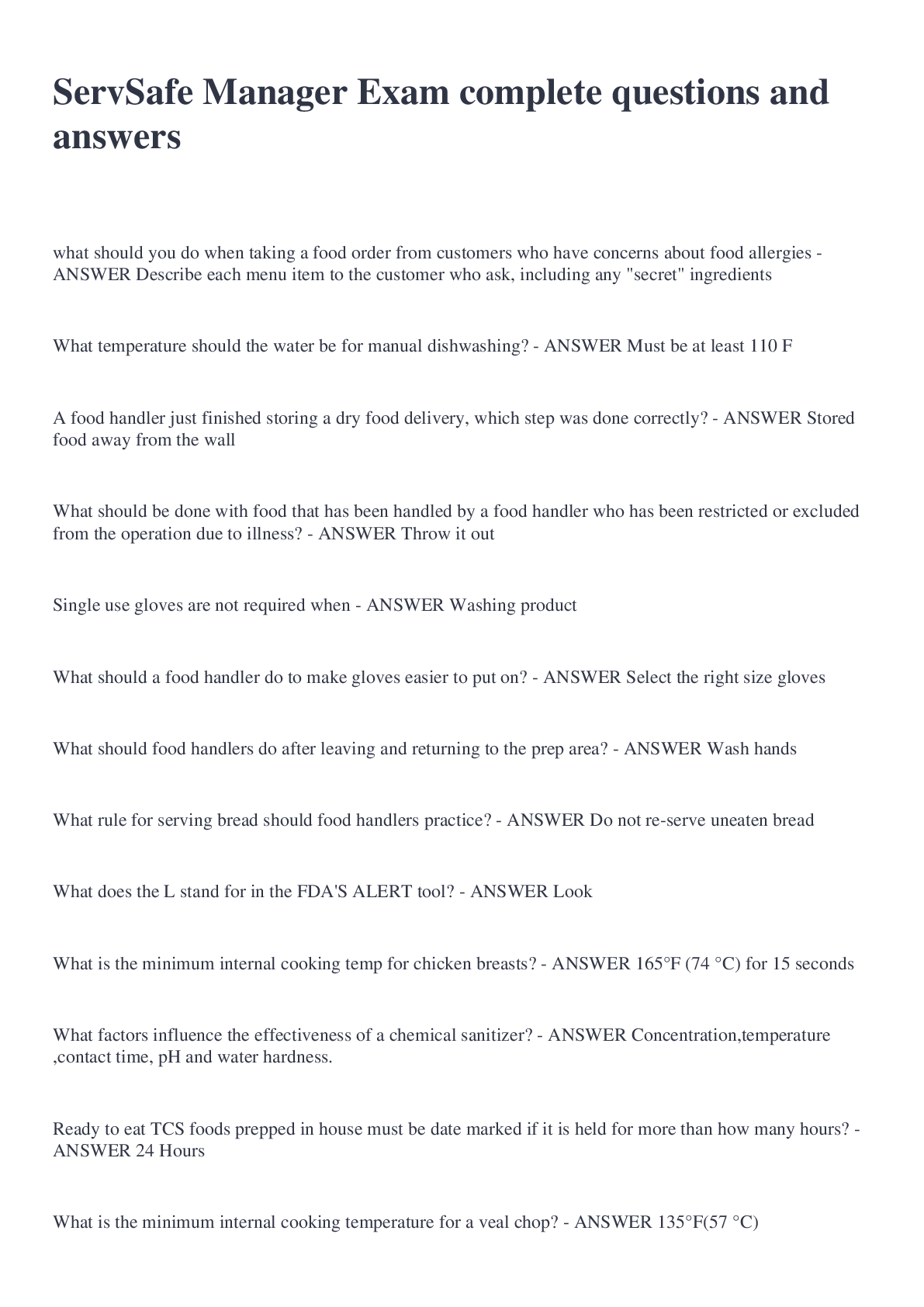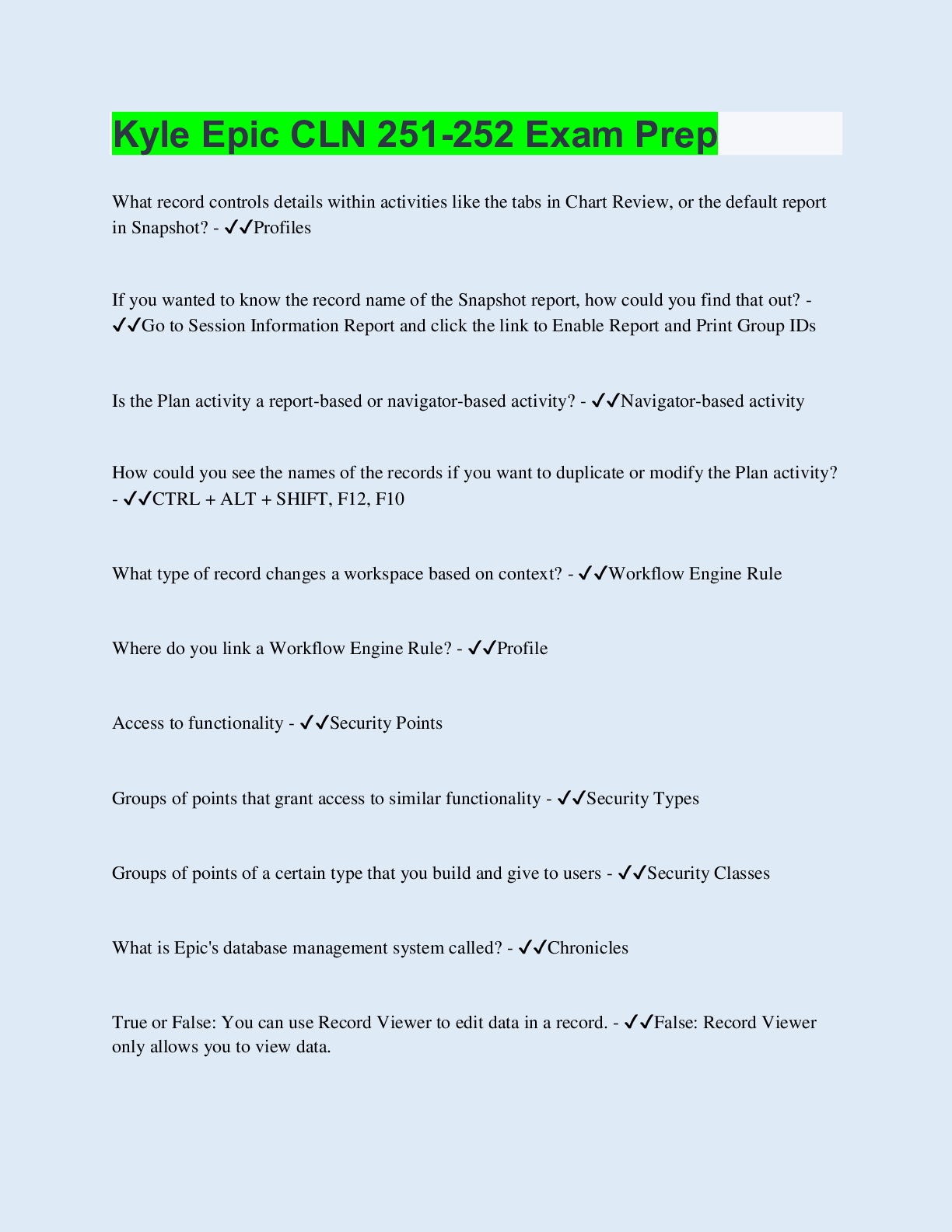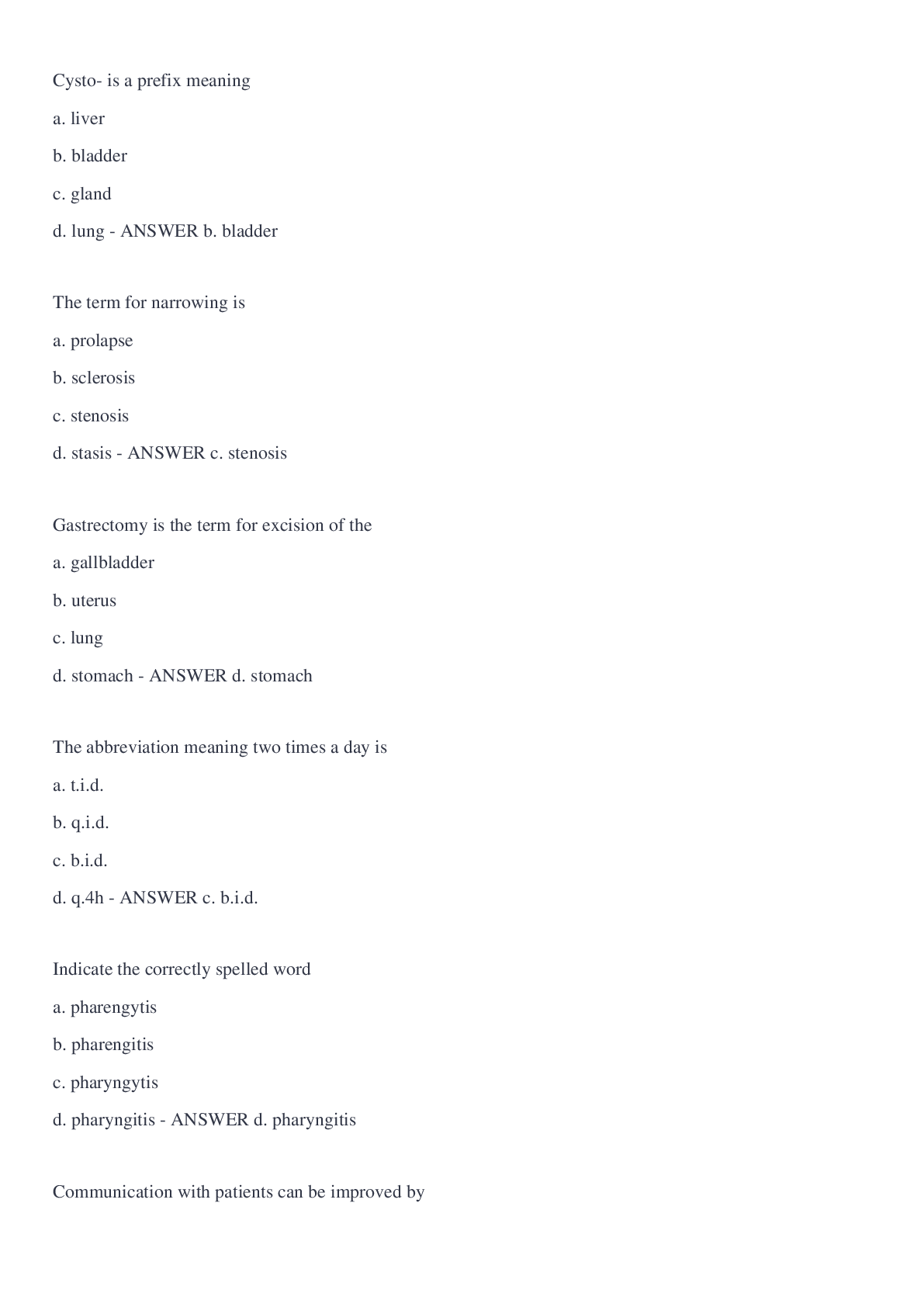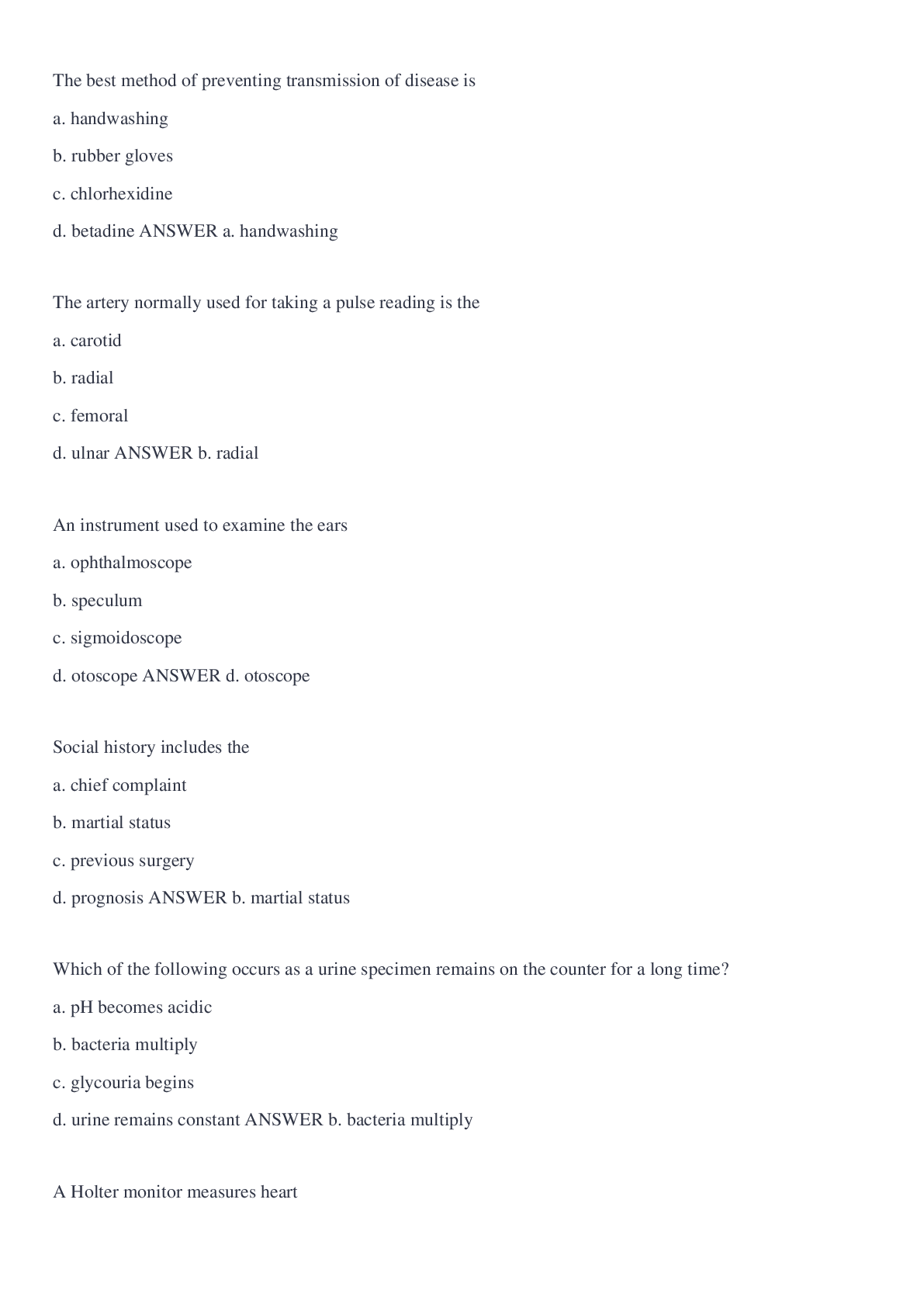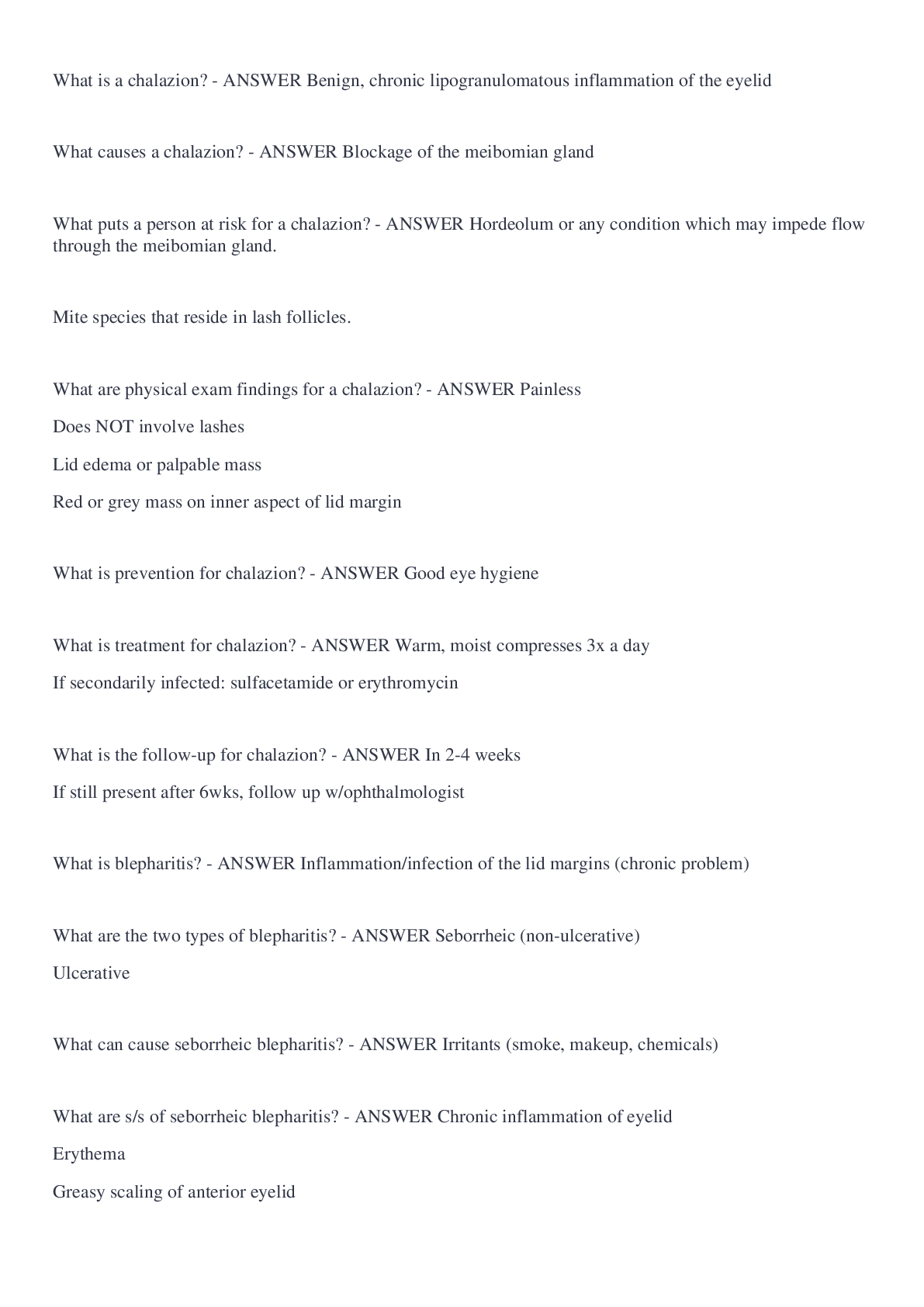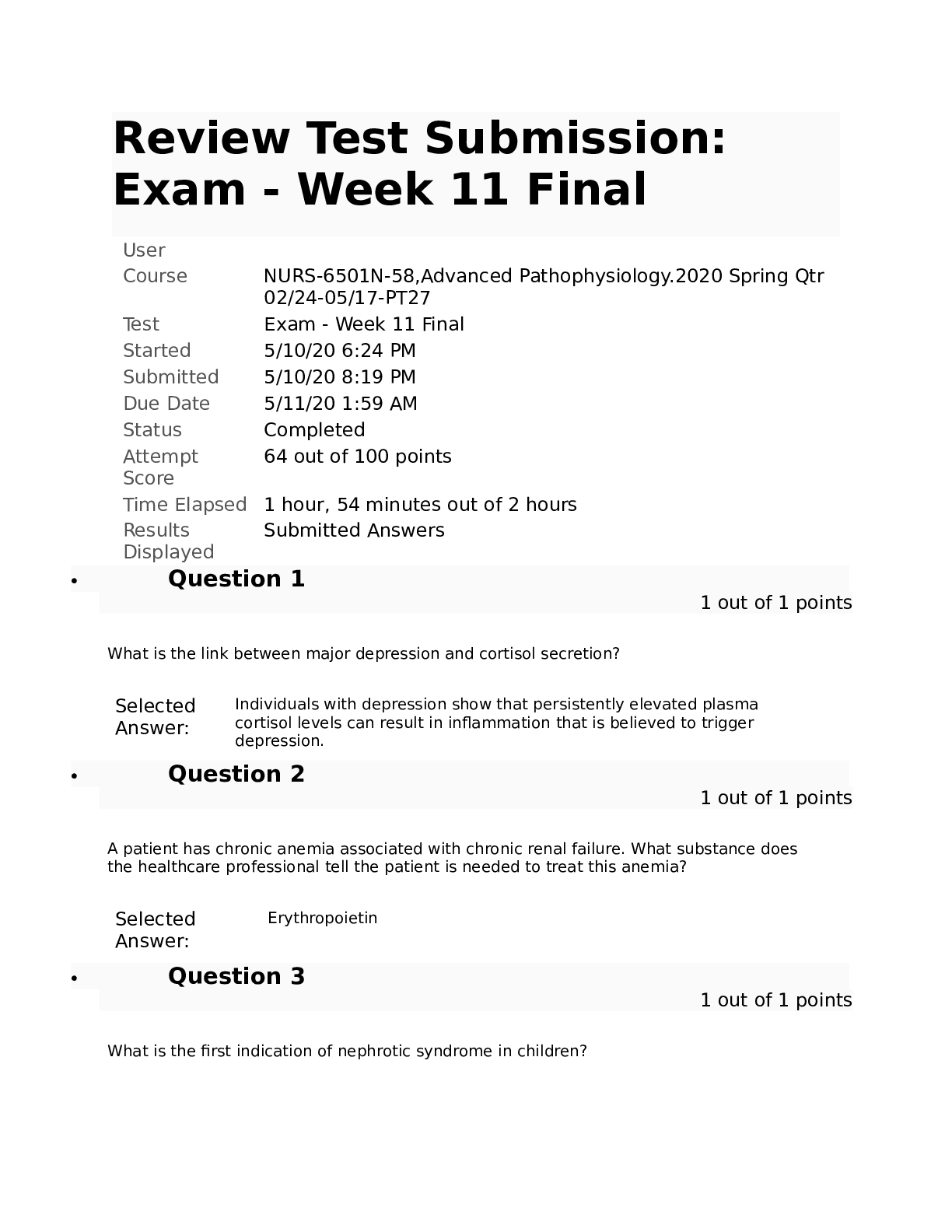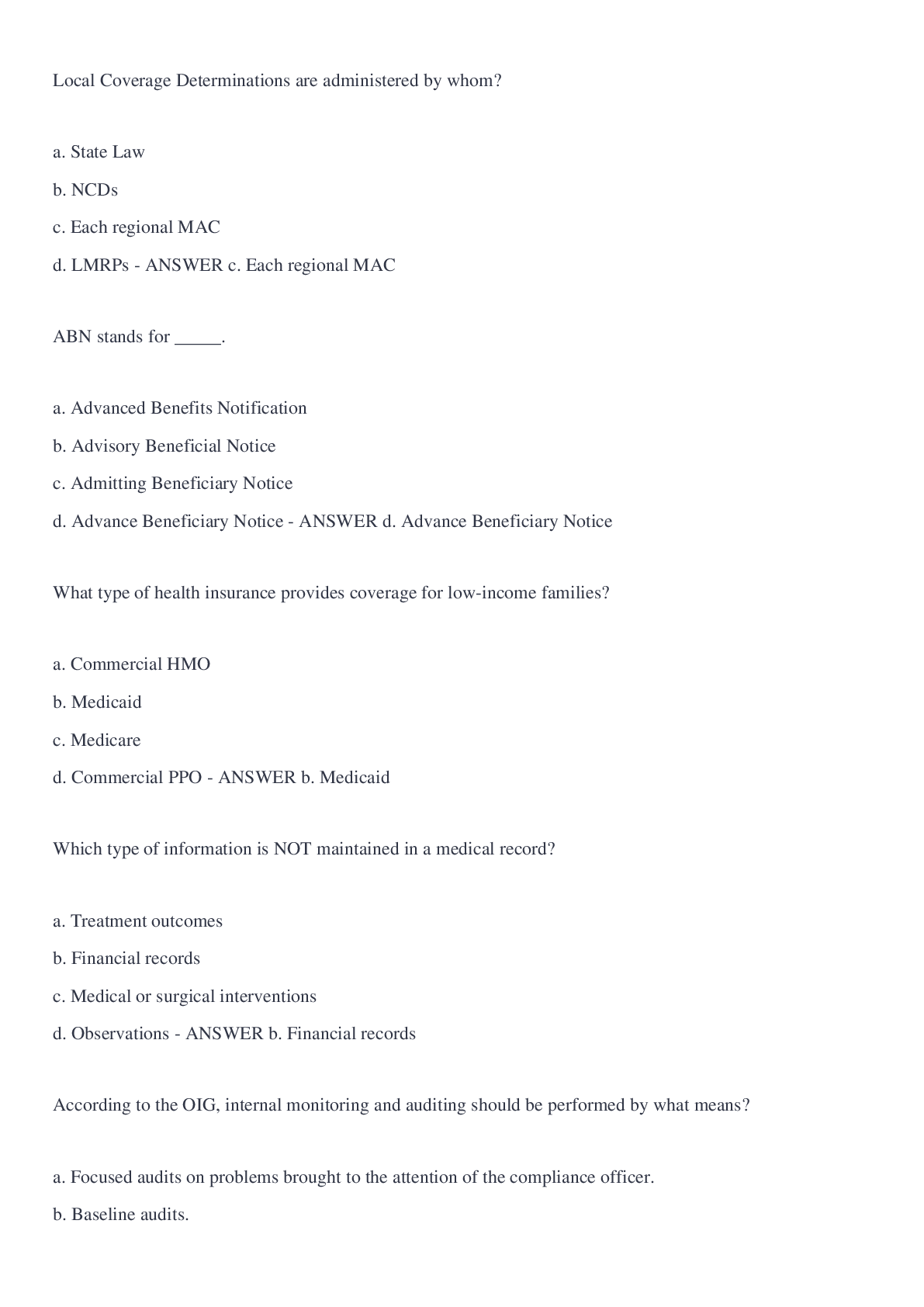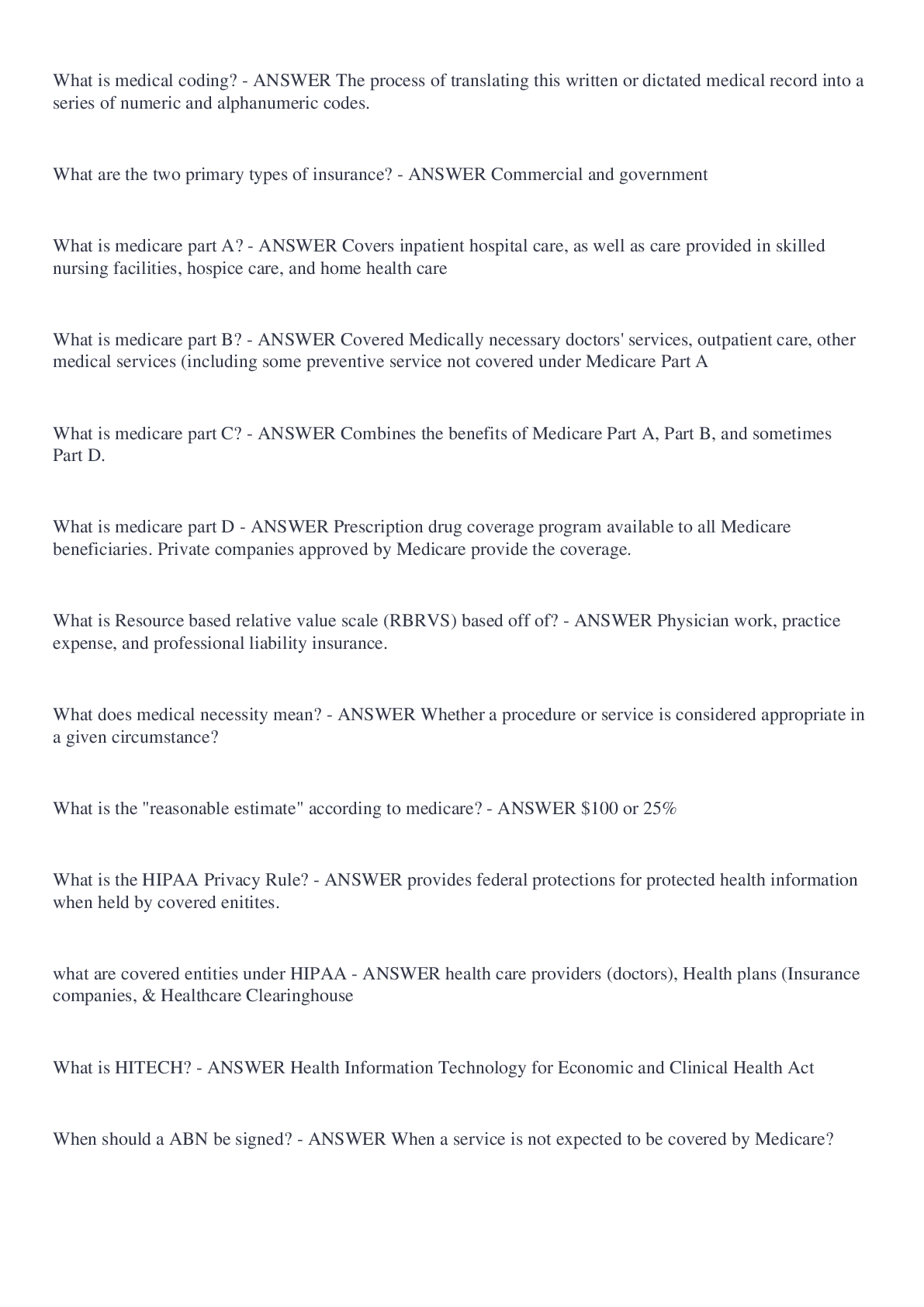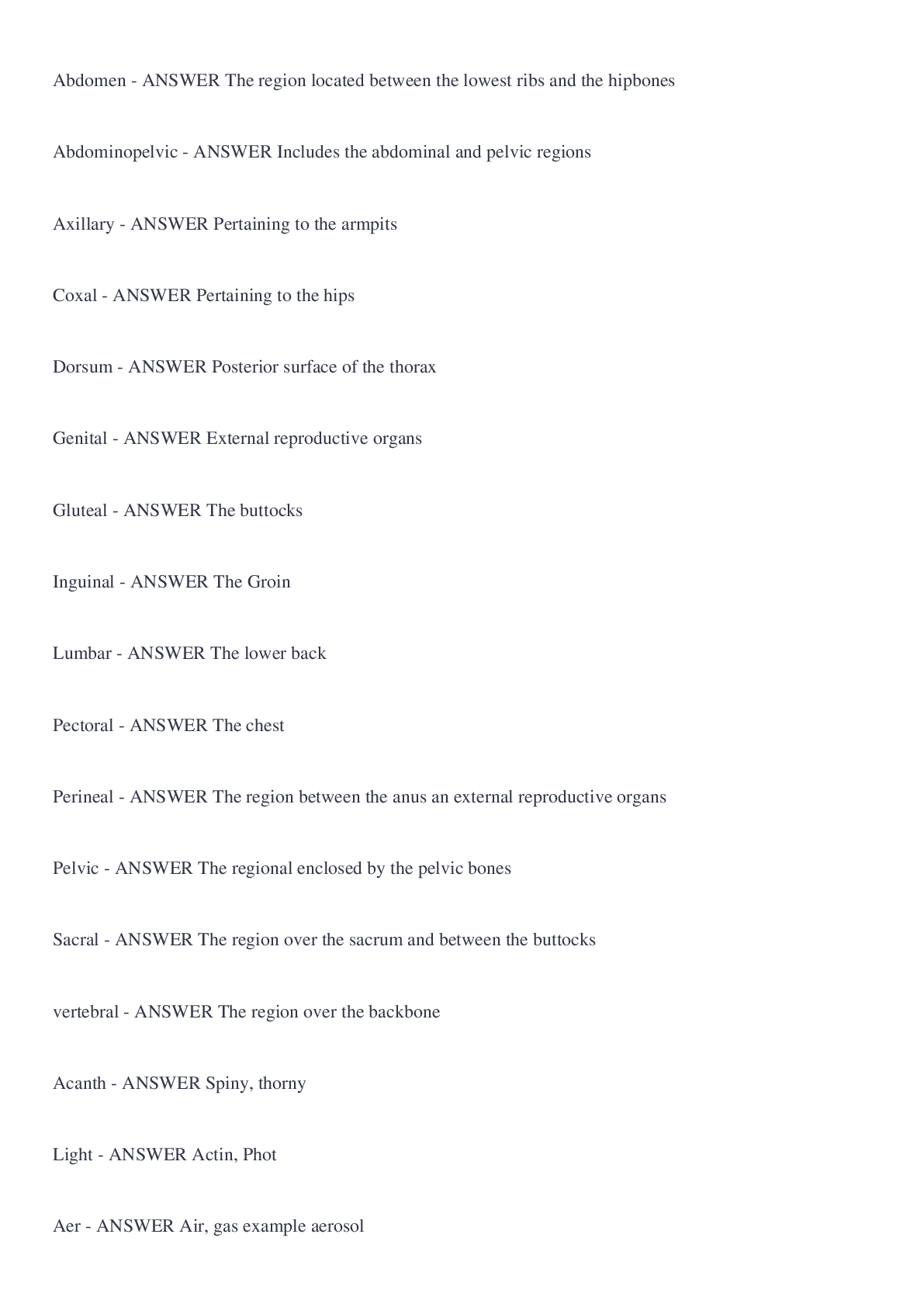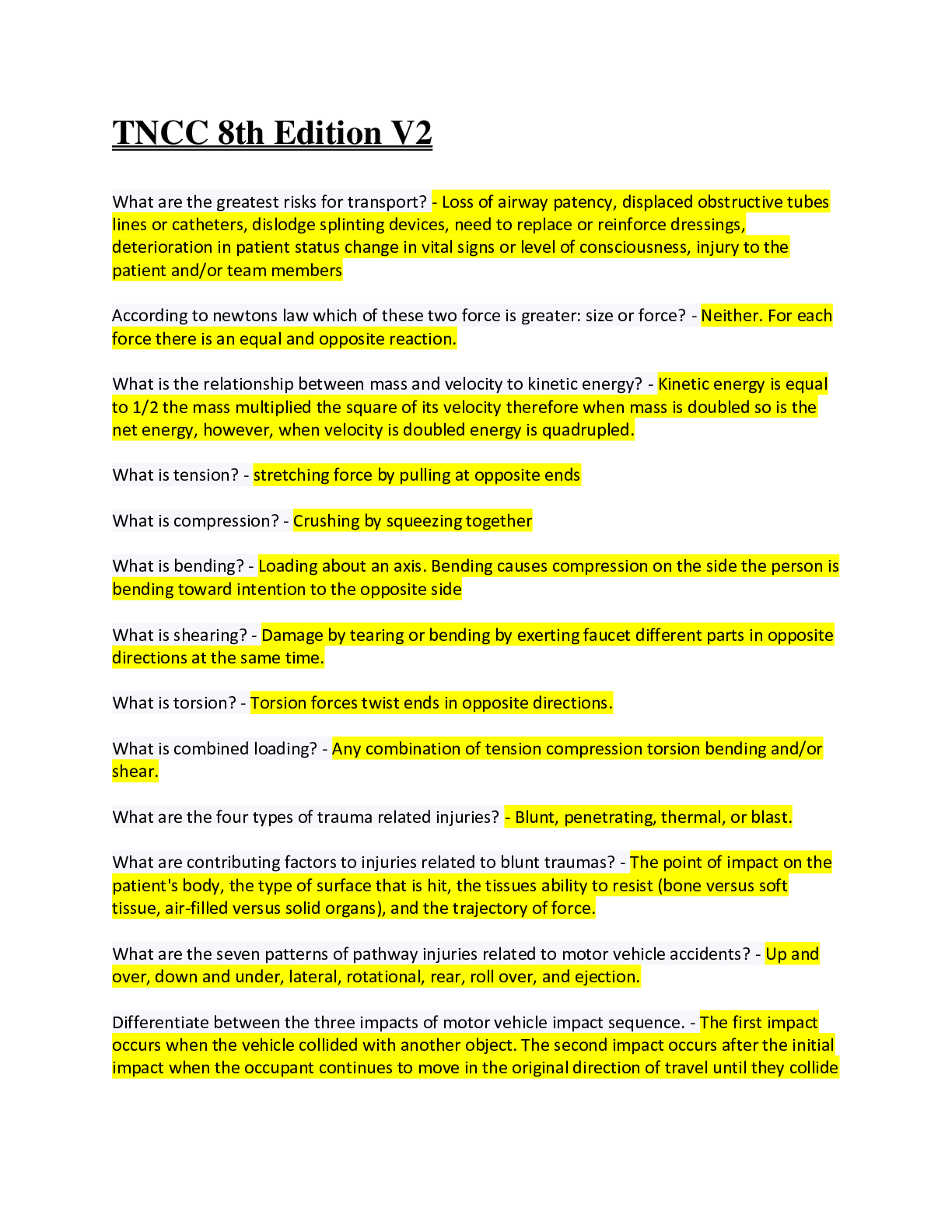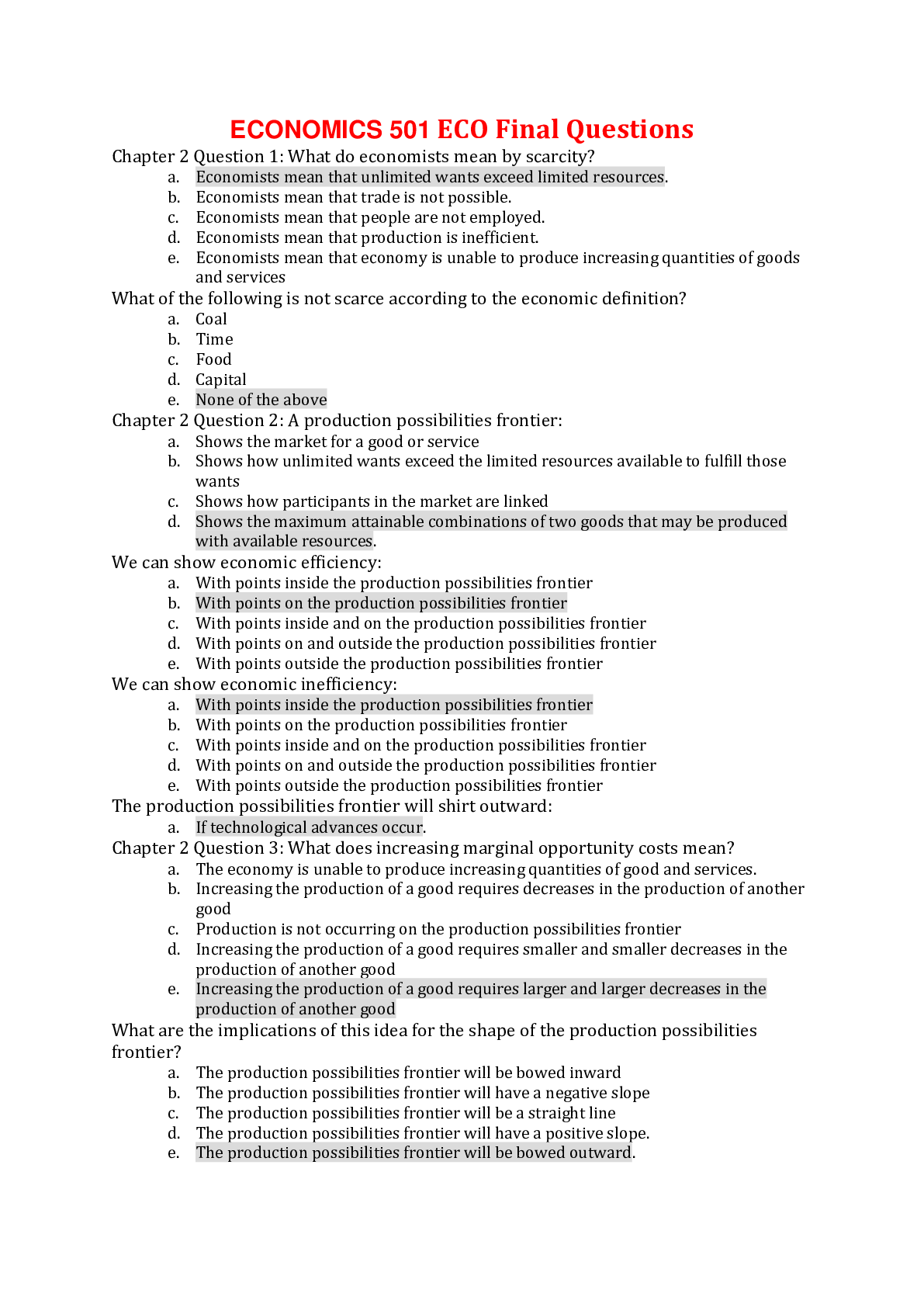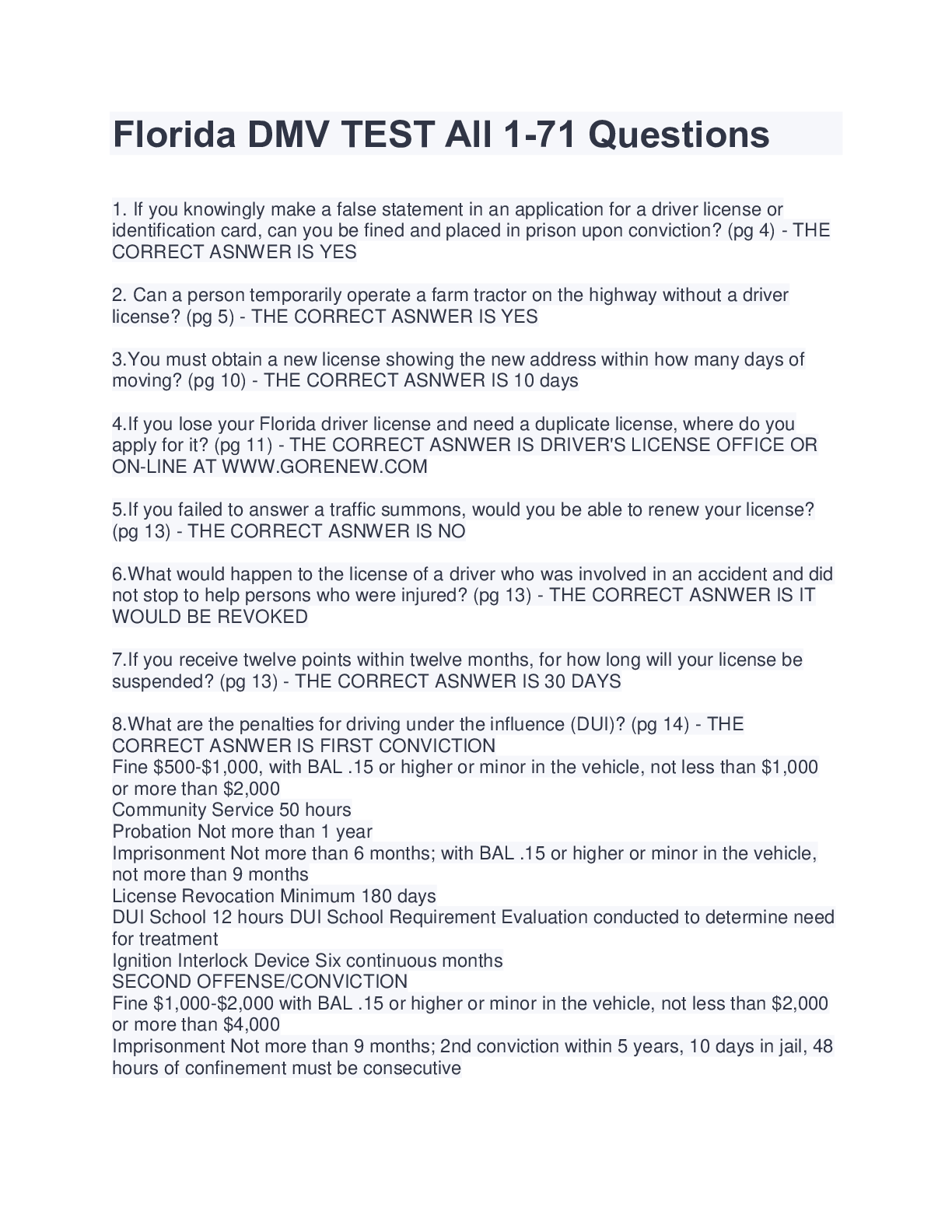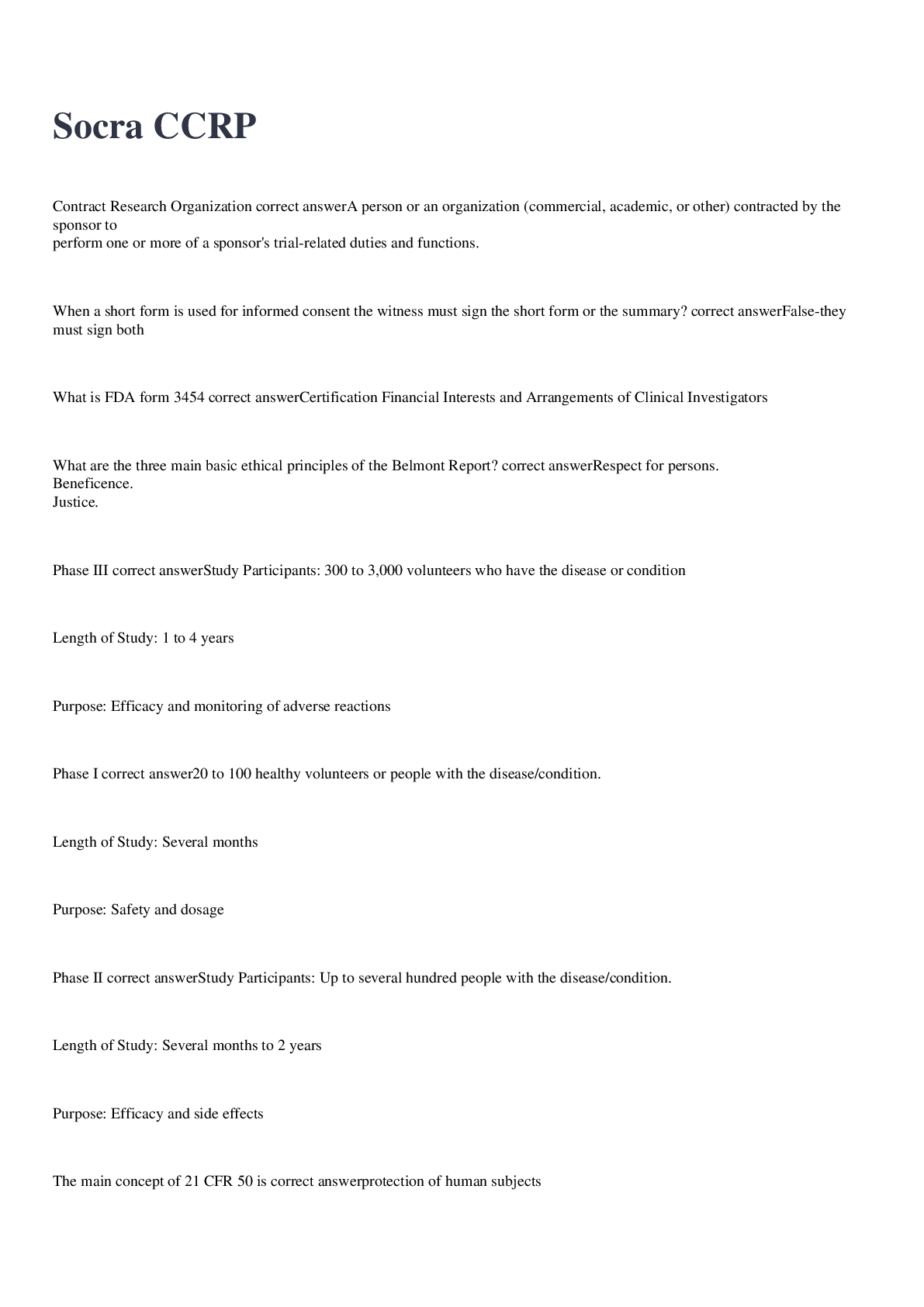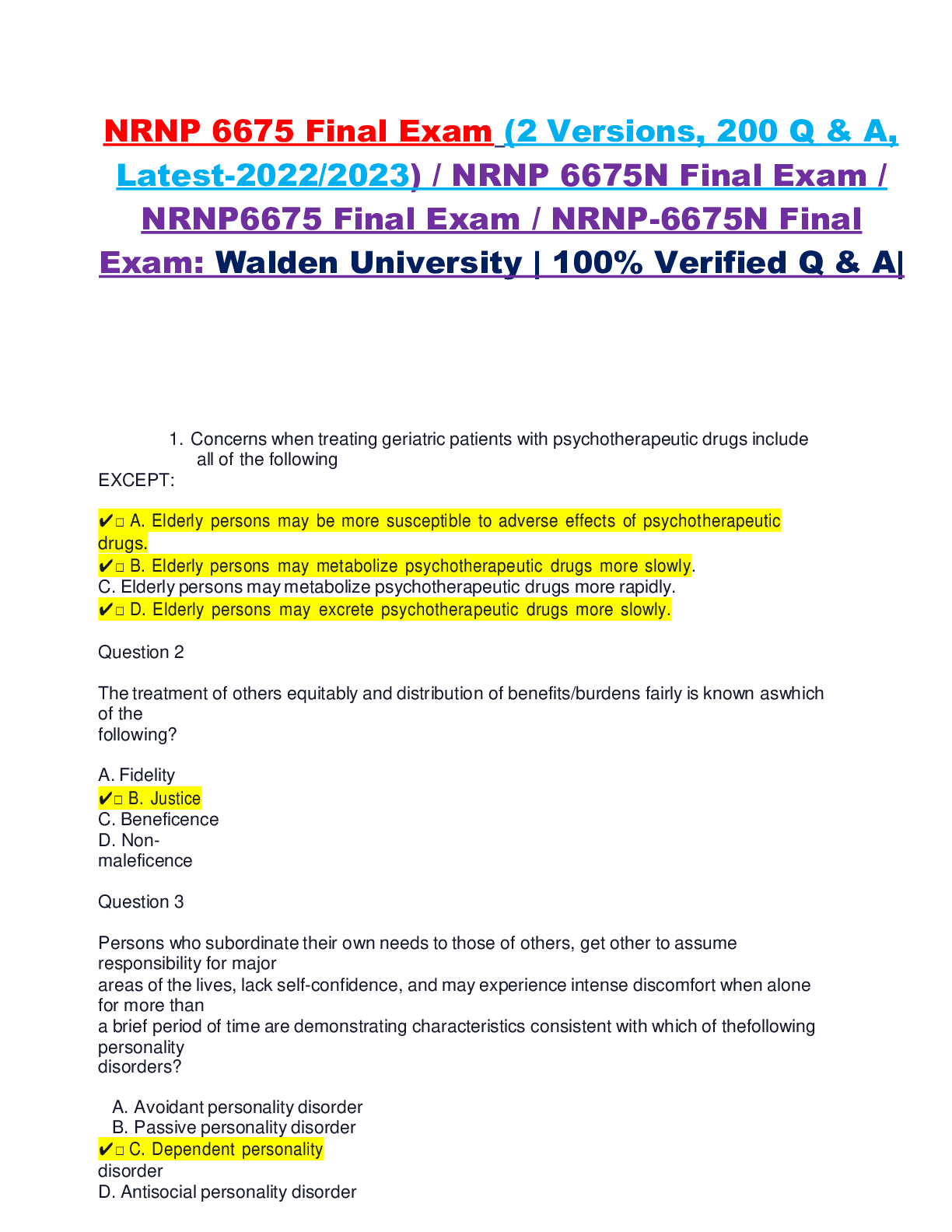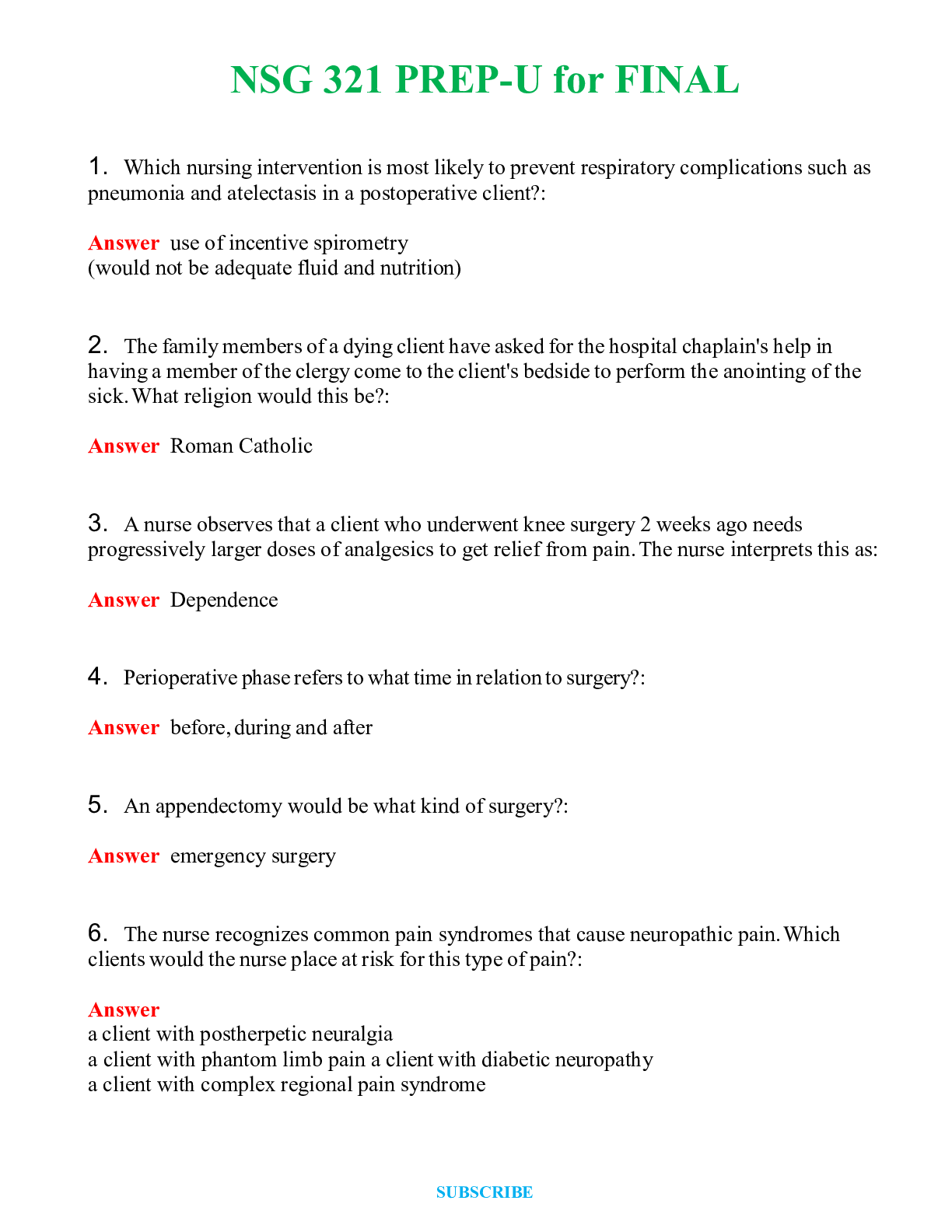Health Care > EXAM > Incident Management Atlassian university Latest Exam 2022/2023 (All)
Incident Management Atlassian university Latest Exam 2022/2023
Document Content and Description Below
mass-casualty incident (MCI) - ANSWER Any call that involves three or more patients Any situation that places such a great demand on available equipment or personnel that the system would require a m... utual aid response Any incident that has the potential to create one of these situations (NIMS) - ANSWER National Incident Management System National Incident Management System (NIMS) - ANSWER developed to promote more efficient coordination among emergency responders at the regional, state, and national levels. Two important underlying principles of the NIMS are: - ANSWER Flexibility, standardization, and concept of interoperability National Incident Management System (NIMS): - ANSWER Provides a framework to enable federal, state, and local governments, as well as private-sector and nongovernmental organizations, to work together effectively Is used to prepare for, prevent, respond to, and recover from domestic incidents, regardless of cause, size, or complexity, including acts of catastrophic terrorism and hazardous materials (HazMat) incidents The five major NIMS components are: - ANSWER Preparedness Communications and information management Resource Management Command Management Ongoing management and maitenance Preparedness - ANSWER The NIMS establishes measures for all responders to incorporate into their systems to prepare for their response to all incidents at any time, including: Procedures and protocols Licensure Equipment certification Communications and information management - ANSWER Effective communications, information management, and sharing are critical aspects of domestic incident management. The NIMS communications and information systems enable the essential functions needed to provide interoperability. Resource management - ANSWER The NIMS sets up mechanisms to describe, inventory, track, and dispatch resources before, during, and after an incident. The NIMS also defines standard procedures to recover equipment used during the incident. Command management - ANSWER The NIMS standardizes incident management for all hazards and across all levels of government. The NIMS standard incident command structures are based on three key constructs: ICS Multiagency coordination systems Public information systems Ongoing management and maintenance - ANSWER The multijurisdictional, multidisciplinary NIMS Integration Center (NIC) provides strategic direction for and oversight of the NIMS. It supports routine maintenance and continuous improvement of the system in the long term, including research and development of supporting technologies. The purpose of the incident command system (ICS) is to: - ANSWER Ensure responder and public safety Achieve incident management goals Ensure the efficient use of resources designed to avoid duplication and freelancing limit the span of control of any one individual The organizational levels may include: - ANSWER sections branches divisions and groups Sections - ANSWER Responsible for a major functional area such as finance, logistics, planning, or operations Branches: - ANSWER Managed by the branch director; may be functional or geographic in nature These tend to be established when span of control is a problem Branches are in charge of activity directly related to the section (ie, fire, law enforcement, EMS, operations, etc.). Divisions and groups - ANSWER Serve to align resources and/or crews under one supervisor. Divisions usually refer to crews working in the same geographic area. Groups usually refer to crews working in the same functional area, but possibly in different locations. Incident Commander (IC) - ANSWER the parson in charge of the incident overall Assess the incident Establish the strategic objectives and priorities Develop a plan to manage the incident Small incidents often mean the IC will do it all. In an incident of medium size or complexity, the IC may delegate some functions but retain others. In a complex situation, the IC may appoint team members to all of the command roles. Unified Command System - ANSWER A command system used in larger incidents in which there is a multiagency response or multiple jurisdictions are involved. Plans are drawn up in advance by all agencies that assume a shared responsibility for decision making. Single Command System - ANSWER One person is in charge, even if multiple agencies respond. generally used with incidents in which one agency has the majority of responsibility for incident management. Ideally, it is used for short-duration, limited incidents that require the services of a single agency. Command Post - ANSWER set up in a vehicle, it should be well marked, and you should know its location. Make sure that your supervisor or the IC knows of any plans or operations before they are initiated. If the incident is very large, you will report to a supervisor working under the IC. Transfer of Command - ANSWER Because an incident can rapidly change in size and complexity, an IC may turn over command to someone with more experience in a critical area. The process of moving the responsibility for incident command from one Incident Commander to another. Transfer of command must include a transfer of command briefing, which may be oral, written, or a combination of both. Termination of Command - ANSWER The end of the incident command structure when an incident draws to a close. The general staff defined in the ICS includes the following sections: - ANSWER Finance Logistics Operations Planning Commmand Finance - ANSWER Responsible for documenting all expenditures at an incident for reimbursement Finance personnel are not usually needed at smaller incidents, but at larger incidents it is necessary to keep track of personnel hours and expenditures for materials and supplies. The time unit The procurement unit The compensation and claims unit The cost unit Logistics - ANSWER Responsible for: Communications equipment Facilities Food and water Fuel Lighting Medical equipment and supplies for patients and emergency responders Logistics personnel are trained to find food, shelter, and health care for you and the other responders at the scene of an MCI. Operations - ANSWER Responsible for managing the tactical operations usually handled by the IC on routine EMS calls The operations section chief will supervise the people working at the scene of the incident, who will be assigned to branches, divisions, and groups. Operations personnel often have experience in management within EMS. Planning - ANSWER Solves problems as they arise during the incident obtain data about the problems, analyze the previous incident plan, and predict what or who is needed to make the new plan work. development of an incident action plan, which is the central tool for planning during a response to a disaster emergency. Three important positions on the command team that help the general staff and the IC are: - ANSWER Safety Officer Public Information Officer Liaison Officer Safety officer - ANSWER Monitors the scene for conditions or operations that may present a hazard to responders and patients May need to work with environmental health and HazMat specialists Has the authority to stop an emergency operation whenever a rescuer is in danger Should remove hazards to EMS personnel and patients before the hazards cause injury Public information officer (PIO) - ANSWER Provides the public and media with clear and understandable information Keeps the media safe and from becoming part of the incident May cooperate with PIOs from other agencies in a joint information center (JIC) In some circumstances, the PIO/JIC may be responsible for distributing a message designed to help a situation, prevent panic, and provide evacuation directions. Liaison officer - ANSWER Relays information and concerns among command, the general staff, and other agencies If an agency is not represented in the command structure, questions and input should be given through the liaison officer. Key aspects of information management and incident mobilization and deployment include: - ANSWER Communications Check-in at the incident Initial incident briefing Incident Record keeping accountability Incident demobilization Communications - ANSWER communications should be integrated. All agencies involved should be able to communicate quickly and effortlessly via radios. Communications allow for accountability throughout the incident. Maintain professionalism on all radio communications. Communicate clearly and concisely using clear text (no 10-codes). Check-in at the incident - ANSWER On arrival at an incident, first check in with the incident commander at the base, staging area, or other location designated by the IC. If the incident is large in size or complexity, you will be assigned to a supervisor working under the IC. Initial incident briefing - ANSWER report to your supervisor for an initial briefing that will allow you to get information regarding the incident, as well as your specific job functions and responsibilities. Incident record keeping - ANSWER Record keeping is important for financial reasons and for documentation purposes. If a large piece of equipment becomes inoperable, it may be possible for the agency to be reimbursed for replacement costs. Record keeping also allows for tracking of time spent on the incident for reimbursement purposes. Accountability - ANSWER Accountability means keeping your supervisor advised of your location, actions, and completed tasks. It also includes advising your supervisor of the tasks that you have been unable to complete and what tools you need to complete them. Incident demobilization - ANSWER Once the incident has been stabilized and all of the hazards mitigated, the IC will determine which resources are needed or not needed and when to begin demobilization. This process allows for a prompt return of resources to their parent organizations to be placed back in service. Preparedness - ANSWER Your EMS agency should have written disaster plans that you are regularly trained to carry out. A copy of the disaster plan should be kept in each EMS vehicle. EMS facilities should have disaster supplies for at least a 72-hour period of self-sufficiency. Your EMS service should have mutual aid agreements with surrounding organizations to facilitate requests for help in an emergency. open incident - ANSWER one that is not yet contained; there may be patients who have yet to be located and the situation may be ongoing, producing yet more patients. closed incident - ANSWER one that is contained and in which all casualties are accounted for. Keep the following priorities in mind: - ANSWER Safety Incident stabilization Preservation of property and the environment Establishing Command and Communications - ANSWER If possible, use face-to-face communications to limit radio traffic. Some organizations responding to a disaster might not know how to use a radio. If you communicate via radio, do not use 10-codes or signals. Most communications problems should be worked out before a disaster happens by designating channels strictly for command during a disaster. Whatever form of communications equipment is used, it must be reliable, durable, and field-tested. Medical director - ANSWER This person will supervise the primary roles of the medical branch: triage, treatment, and transport of injured people. The medical branch director helps to ensure that: EMS units responding to the scene are working within the ICS. Each medical division or group receives a clear assignment before beginning work at the scene. Personnel remain with their vehicle in the staging area until they are assigned their duties. depending on the scale of the incident may be logistics sections Triage supervisor - ANSWER Ultimately in charge of counting and prioritizing patients During large incidents, a number of triage personnel may be needed. The primary duty of the triage division or group is to ensure that every patient receives initial assessment of his or her condition. Treatment supervisor - ANSWER Locates and sets up the treatment area with a tier for each priority of patient Ensures that secondary triage of patients is performed and that adequate patient care is given as resources allow Assists with moving patients to the transportation area As the treatment supervisor supervises the responders, he or she must communicate with the medical branch director to request sufficient quantities of supplies, including bandages, burn supplies, airway and respiratory supplies, and patient packaging equipment. Transportation supervisor - ANSWER Coordinates the transportation and distribution of patients to appropriate receiving hospitals and helps to ensure that hospitals do not become overwhelmed by a patient surge Coordinates with the incident commander to ensure that enough personnel and ambulances are in the staging area or have been requested documents and tracks the number of transport vehicles, patients transported, and the facility destination of each vehicle and patient. Staging supervisor - ANSWER is assigned when an MCI or disaster requires a multivehicle or multiagency response. Emergency vehicles must have permission from the staging supervisor to enter an MCI scene and should drive only in the directed area. The staging area should be established away from the scene so that the parked vehicles are not in the way. The staging supervisor locates an area to stage equipment and responders, tracks unit arrivals, and releases vehicles and supplies when ordered by command. This position plans for efficient access to and exit from the scene and prevents traffic congestion among responding vehicles. Physicians on scene - ANSWER Emergency physicians will: Have the ability to make difficult triage decisions Provide secondary triage decisions in the treatment area, deciding which priority patients are to be transported first Provide on-scene medical direction for EMTs, and they can also provide care as appropriate Rehabilitation supervisor - ANSWER establishes an area that provides protection for responders from the elements and the situation. The rehabilitation area should be located away from exhaust fumes and crowds (especially members of the media) and out of view of the scene itself. Rehabilitation is where a responder's needs for rest, fluids, food, and protection from the elements are met. The rehabilitation supervisor must monitor responders for signs of stress, including: Fatigue Altered thinking patterns Complete collapse Extrication and special rescue - ANSWER These officers determine the type of equipment and resources needed for the situation. In some incidents, victims may need to be extricated or rescued by specially trained personnel before they can be triaged and treated. Morgue supervisor - ANSWER Works with area medical examiners, coroners, disaster mortuary assistance teams, and law enforcement agencies to coordinate removal of the bodies and even, possibly, body parts should attempt to leave the dead victims in the location found, if possible, until a removal and storage plan can be determined. The location of victims may help in the identification of the dead victims in mass-fatality situations, or there may be crime scene considerations. If it is determined that a morgue area is needed, the morgue supervisor should ensure that the morgue is out of view of the living patients and other responders because the psychologic impact could worsen the situation. The morgue should be secured from the public to prevent theft of any personal effects of the dead victims. If there are multiple patients and not enough resources to handle them without abandoning victims: - ANSWER Declare an MCI (at least for the present time) Request additional resources Initiate the ICS and triage procedures Triage - ANSWER sort your patients based on the severity of their injuries. Primary triage - ANSWER the initial triage done in the field, allowing you to quickly and accurately categorize the patient's condition and transport needs. patients are briefly assessed and then identified in some way, such as by attaching a triage tag or triage tape. Secondary triage - ANSWER done as patients are brought to the treatment area. After the primary triage, the triage supervisor should communicate the following information to the medical branch director: - ANSWER The total number of patients The number of patients in each of the triage categories Recommendations for extrication and movement of patients to the treatment area Resources needed to complete triage and begin movement of patient Immediate (red) - ANSWER Your first priority These patients need immediate care and transport. They usually have problems with the ABCs, head trauma, or signs and symptoms of shock. Delayed (yellow) - ANSWER The second priority Need treatment and transport, but it can be delayed Patients usually have multiple injuries to bones or joints, including back injuries with or without spinal cord injury. [Show More]
Last updated: 1 year ago
Preview 1 out of 16 pages
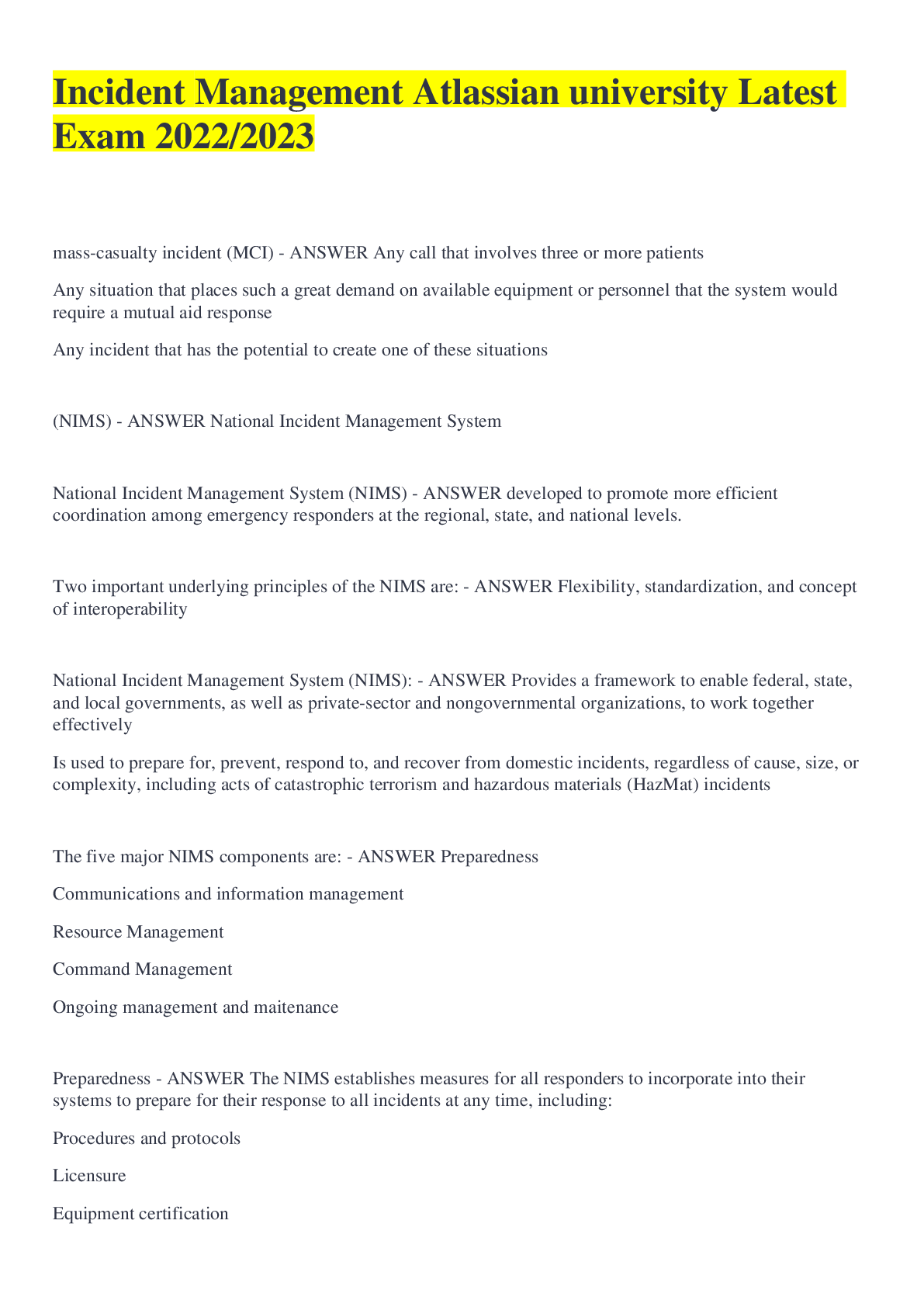
Reviews( 0 )
Document information
Connected school, study & course
About the document
Uploaded On
Sep 18, 2022
Number of pages
16
Written in
Additional information
This document has been written for:
Uploaded
Sep 18, 2022
Downloads
0
Views
24

